MIBS CZone tour, enabling the car-like boat
In Miami Actuant Electrical invited a few boating writers like Ed Sherman, Steve D’Antonio and myself to tour several production boats that have chosen to use BEP CZone distributed power and digital switching systems. A highlight for me was getting to hear the founder of Scout Boats explain why he would do such a crazy thing. I joke of course — and there’s an argument that you have to be a little nuts to build boats anyway — but Steve Potts (seen to the right of BEP’s Jarrod Sagar above and interviewed here in Soundings) made a compelling case for why systems like CZone are critical to creating boats that truly satisfy modern customers…
A key feature of the Scout 320 LXF is that little BEP Wireless Remote hanging on the key chain above. Because it can integrate with CZone and because one section of the 320’s CZone system is set up to stay on 24/7, the owner of this boat will be able to tap the remote while walking down the dock and the boat will be ready to go when he or she gets there. Which is probably similar to what he or she experiences when approaching their automobile or even their house. Potts said that many of his potential customers simply expect this level of automation and ease-of-use these days. (It’s an expectation I too am acquiring; after putting 5,000 miles on my new and highly automated Ford Escape Titanium, I found myself annoyed last night when I realized that my rental economy car wasn’t smart enough to turn off its headlights while I bought provisions in a Myrtle Beach supermarket
On a more traditional boat, the user would probably need to mess with the main panel above at least before and after a session underway. But those are BEP motorized battery switches that can be managed in many ways by CZone, and often the owner might only visit here to dock an iPod or iPhone in that Fusion MS-IP700 (that I’m long testing on Gizmo). Note though that there are some normal mechanical circuit breakers for certain loads like the windlass, and also that this non-digital switching can be mixed neatly with all those buttons that mostly activate CZone circuits from the helm. In other words, a builder doesn’t have to completely commit to CZone, though the commitment is major…
I took the shot above by sticking my camera through a transom access panel and it shows distributed power in action. You can see the red positive feed from the main panel and battery banks to two CZone switching modules, as well as the NMEA 2000 drop cables that control them. All those smaller positive DC feed wires and the neatly ganged yellow grounds represent cabling that is not going all the way to the main panel in the traditional fashion. So lots of wiring weight and hassle are avoided while those digital circuit breakers can be controlled in infinite ways and can also monitor the passing current (as can the Maretron DCR100 I just installed).
In fact, BEP claims that once a builder gets in the CZone groove, the total system and install cost is similar to conventional wiring systems and thus all the digital features become ‘free’. But, wow, imagine what a change it is on the shop floor and what a huge headache it would be if such a system developed recurring issues and had to be entirely replaced. Which has happened with more than one distributed power scheme, at least according to the rumor mill. Ed and Steve naturally had lots of good questions about professional and owner troubleshooting; it’s obviously harder but we were assured that these boats will have a manual identifying all the individual CZone circuits and how you can bypass the digital switch by simply moving a blade fuse.
At any rate, I found it impressive that BEP could show us not one but three CZone-using manufacturers who were exhibiting at the main MIBS location. That’s the helm of a new, and quite sexy, Jupiter 41 Express above and, though I wasn’t able to change the screens on those Simrad NSO monitors, I know that all sorts of CZone features like lighting modes are integrated in (as discussed before on Panbo). And while I didn’t get any photos and the company doesn’t say much about it on their web site, I did see several high-end YellowFin center consoles that were all touch screen and CZone. I also heard company president Wylie Nagler express deep commitment to the system…
Because I photographed the helm above on a separate visit to the Scout Boat exhibit, I don’t know if it too has CZone (the boat was too busy for me to poke around). But digital switching certainly would go nicely with ease-of-use features I saw briefly on those new Garmin 8000 MFDs; SmartMode is the similarly activity-oriented equivalent of lighting modes, for instance. And I did get a chance to ask Jarrod Sagar if BEP was working with other MFD manufacturers besides Simrad; he was a bit reserved, saying that “We are working with Simrad for now, but as the integration between MFD’s and digital switching becomes mainstream then both parties will need to look at other options. The technical challenge to get different systems working together is not insignificant.” However that goes, CZone’s apparent success with builders plus Raymarine’s entry into digital switching makes me think that the technology has turned a corner.
Oh, and will there be a CZone app that brings its monitoring and switching abilities to smartphones and tablets (as N2KView does for Maretron/Octoplex systems)? You bet! We saw the demo below, boatbuilders will start working with it in May, and the finished app is scheduled to debut at next fall’s IBEX show.


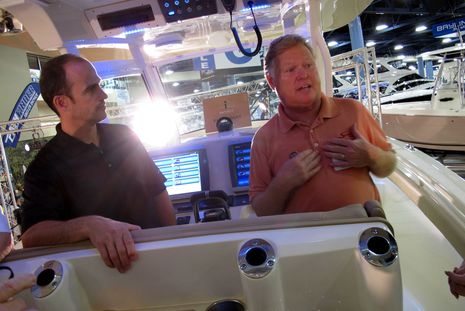
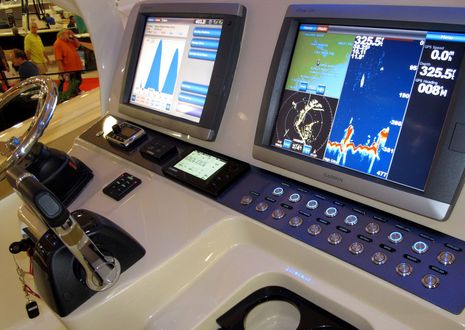

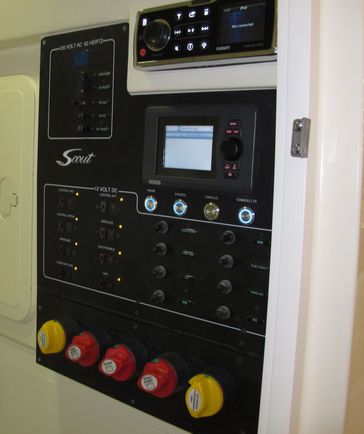
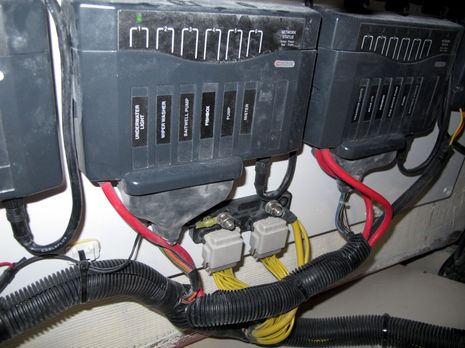
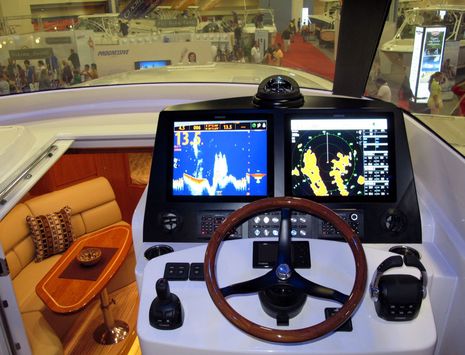
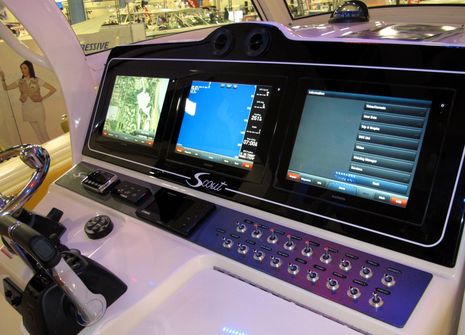
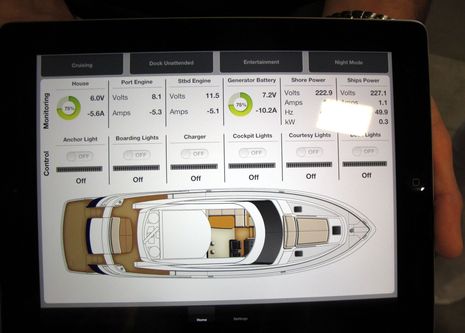
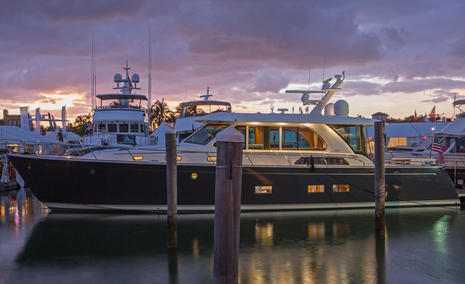
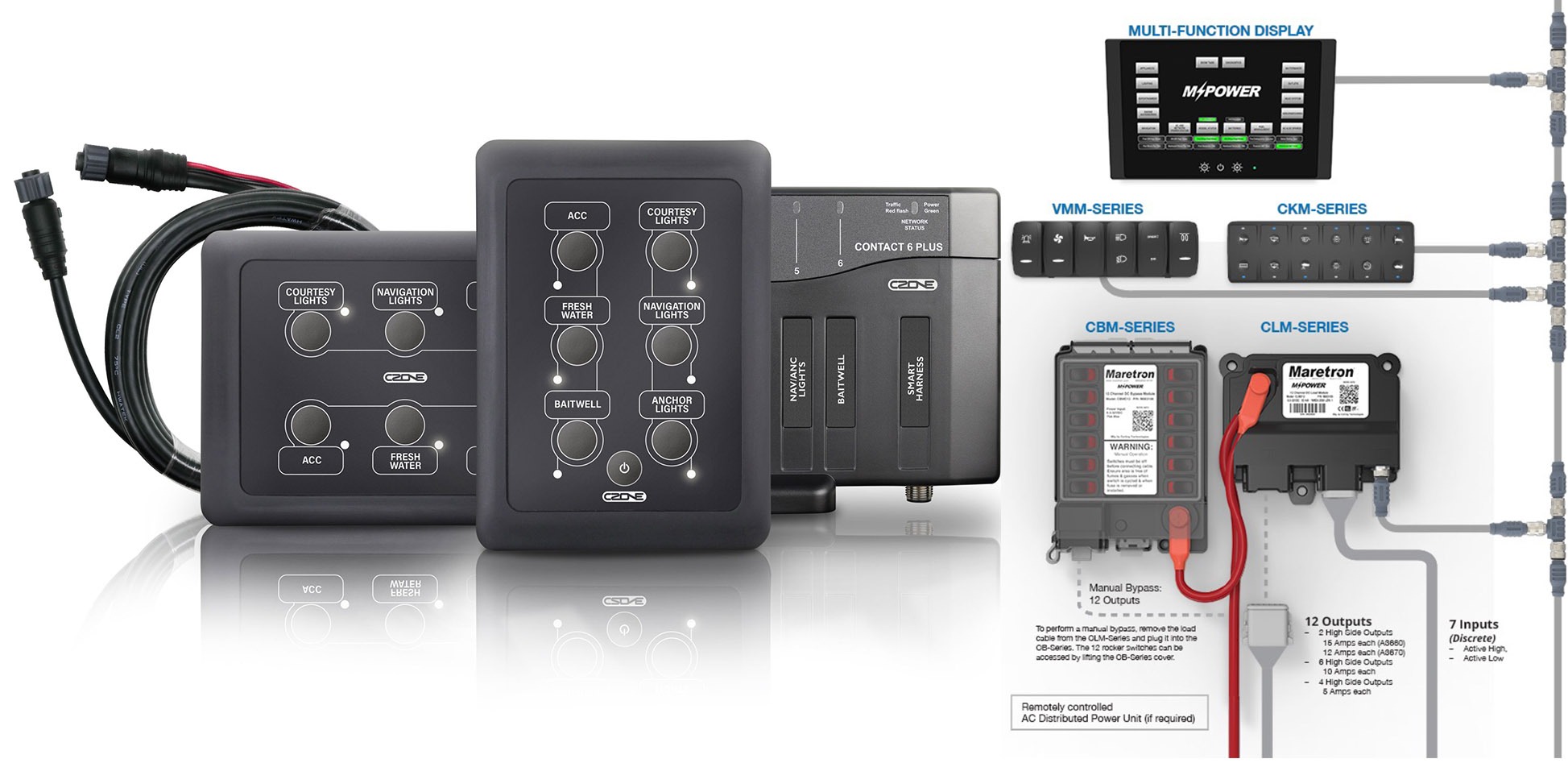









Ben,
I agree that this is the future with regard to wiring production boats. My concern is what it does to the aftermarket business. Having done some installations on boats with switching systems, it can be difficult to integrate aftermarket devices into the system. If there are no available “spares” left in the factory system, You are stuck having to install an old school swtich or breaker, whether for electronics or additional DC circuits (underwater lights, for example).
I think builders need to consider the aftermarket “expandability” of these systems. Plus it sounds like one more system we installers will need to get training/certification in.
I am curious about NMEA-2000 PGN standards for this, and if those standards extend to devices that are outside of the direct control of the digital circuits, say to products that draw power from the NMEA-2000 bus so that they can share the same user interface.
Or for that matter, does CZone support turning on products beyond its digital circuits? Do they support their products being controlled by all the other chart plotter brands?
Bill, that’s a good point. While I don’t think it’s too hard to add another CZone switching module to a boat, what may be beyond most installers is modifying the CZone software to do the switching. But there is a Panbo reader (and electrical engineer) who has designed and programmed his own system and will be writing about it here eventually. I also have a simple CZone system partially installed on Gizmo and am hoping to program it myself some day.
Dan, there are some standard PGNs for switching but the major set of power PGNs has still not been released. I keep hearing that it’s close, and almost made N2K V3, but…
So I believe that CZone and others are using proprietary PGNs, plus I’m not sure they’ll adopt standard messages when available. After all, opening up control of things like main battery switches could be asking for trouble.
“Or for that matter, does CZone support turning on products beyond its digital circuits?”
I don’t understand. What would that be? There is a CZone switching modules that can handle motors and also a solenoid-driven AC system.
“Do they support their products being controlled by all the other chart plotter brands?”
Like I wrote, their relationship with Simrad is apparently not exclusive. But then again incorporating full CZone support into an MFD does not look trivial.
People want the ease and convenience they experience with their land vehicle?
God forbid they have to go down below and turn a battery switch and maybe sniff the air for trouble.
With a car you can just pull over to the side,on a boat
you know this stuff will fail or even worse go intermittent at the worst of times in a storm far from port.
I will keep things more “robust” thankyou.
I like my toys but for power distribution I must say no.
Hi,
I’m in the middle of implementing a C-zone system on our 31 year old 46ft cruising sailing boat. I have a couple of comments about some of the questions/comments above:
1) Like all electrical systems, expansion will be dictated more by how good the initial system design is than by limitations of the system.
With standard systems, expansion is often done haphazardly by simply finding a power line near the new equipment and tapping into that. That often leads to combined functions on the switch panel which aren’t noted (“oh yeh”, the owner tells new guests, “if you want to use those nice new led reading lights in your cabin, you have to turn on the deck wash pump switch”). And is it on any diagram? Of course (not) :). Sound familiar? It’s the boat’s next owner that has all the fun trying to figure it out (happened to us when we bought our boat – she was 18 then).
I’ve found that leaving a free output on each C-zone switching module was worthwhile for future expansion purposes. But also, it’s very easy to just add a complete new module if really necessary. And the software that Ben talks about is very easy to modify – in my opinion any technically adept person should be able to figure the basics out, and I’d be very suspicious of any installers or dealers who can’t learn the system inside-out.
Also, the system requires you to document all your circuits, and that’s all held in easily viewed software.
2) All these distributed circuit systems are ahead of the N2K PGN development at this stage, so there’s always a risk with an N2K network. But supposedly they’re using proprietary PGNs that will not cause interference, and that future PGN standards will not have problems with. But, even if they do, because it’s all s/w driven, they can be easily changed without requiring a re-wire.
I’ve taken the route of installing 2 N2K networks, with a data bridge. One for instruments, etc, and the other for C-zone. It doesn’t require much more wiring, and is probably just good design practise.
3) As Ben says, you can get control modules for C-zone to control almost any type of load, so no issue controlling products beyond it’s digital circuits. The C-zone system is just a logic & switch system. No devices controlled by C-zone get power from the N2K network: devices that do (such as instruments) don’t need an individual C-zone switch circuit, they’d all be controlled by a single switch circuit for the N2K network main power.
4) Regarding more “robust” manual switching: I’d have to disagree with Peter here. Each C-zone switch can be physically over-ridden manually (as Ben noted in the article). So if anything goes wrong with the software, you always have the choice of a manual over-ride.
Of course, it’s slightly different from a central switchboard, because the over-rides are on the switching modules, which are at various points around the boat. But as long as you’ve designed the system well, and labelled the boxes and where they are, it’s certainly a usable backup in an emergency
It does require that the system designer has put the switch boxes where they are accessible, so I’m not sure that I like the photo Ben posted of some stuck in a transom access panel. Again, as in all electrical systems, the system designer plays a big part in ease of future use in the real world.
Also, I think the C-zone system is easier to troubleshoot than a central traditional system. In that system, if something goes wrong electrically, you have to trace wires (often not labelled) through the whole boat, and look for badly positioned butt connectors (for e.g.) that may have gone wrong. In my experience most problems come from poor connections. In a C-zone system, the wiring complexity is significantly reduced, with a lot fewer connections, making physical troubleshooting a lot easier.
Anyway, those are just a couple of points regarding this system.
Cheers,
Paul.
Ben,
There is no question that the capabilities of distributed power systems are pretty spectacular. I think the big concern is in the future of these systems. As you are well aware, marine electronics companies are notorious for dropping legacy products and support for them. What is going to happen in a few years when a power module is fried and they are no longer made and ,of course, the new, improved system is not backward compatible? I know I’ll be able to buy a circuit breaker for another 20 years. (I did retire my oil lamp, though.)
Thanks, Paul! I for one am really looking forward to reading about how you designed your system and seeing how it came out.
Max, I agree in large part. I can’t think of another type of boat system that is both as intriguing and as frightening as distributed power. For instance, a couple of years ago ED&D told owners of their E-Plex system to stock up on modules because they were shutting down in 30 days!
https://panbo.com/archives/2010/04/distributed_power_over_n2k_and_goodbye_e-plex.html
In fact, though, the system was taken over by another company and looks reasonably healthy now:
http://www.e-plex.co/
There may be a point when there are enough of a certain system out there that someone will at least keep service alive. But I’d certainly check out a company’s overall business health.
I like, for instance, that BEP has already shown long term commitment to CZone and now as part of Actuant it is sibling to MasterVolt and Marinco. I didn’t mention it here, or see it on these boats, but I know that integration of CZone and MasterVolt power products is happening as we talk.
I’m also confident that Maretron and Octoplex are in the game for the long haul, largely because they are under the wing of Carling Technologies which has been doing well since 1920 making…hold the beat…mechanical circuit breakers and switches:
http://www.carlingtech.com/company-history
Yachts unlike cars are built up from components from many manufacturers.. typically leaving the owner flexibility to fit out, alter and expand their on board systems. This is a double edged sword and clearly a challenge to marry all the components and systems together in one happy family… and of course aesthetics are a consideration as well. A proper yacht must be stunning to the eye.
When it comes to electronics this means there needs to be some sort of effective means to get these components to work together and do so optimally. But with so many features complexity is growing and presenting all manner of baffling decisions to produce that happy family.
All the data is useful… to a point.. and that point depends on the type of use the vessel serves. Look at the difference in the cockpit between a glider and a bowing – both planes! Both flying through the air… to get from here to there.
Max, I agree with you, but I think not twenty years, but with the explosive growth of technological advancement, it may be just 5 or 10 years, and I’m being optimistic. We had a near scare with Eplex. I am been involved with a large three year old very extensively computer controlled boat, and keeping it running reliably has been very challenging.
Software configuration management alone is a vast subject. Who owns the software on these boats? Do owners get a copy of it, along with the tools needed to use it? Can dealers really support these systems? Do the manufacturers keep good track of the software by hull? Is their a different version on every boat depending on options purchased? Hardware is one thing, but the software makes the toilet flush, and turns on the running lights and chartplotters.
Bill Bishop was way more eloquent than I was without typos to boot. The level of complexity and data / information may be reaching the point where it usefulness has exceeded the need to know. And we then become slaves to complex technology that requires esoteric knowledge to service and maintain. And to me that means messing about on boats slips from the very possible to the mostly implausible.
Too much black box stuff going on… mysteries that handicap and don’t assist the person who has to deal with these systems.
I don’t see thing changing and getting better… Only worse. Look at the phone… as an example.
A thought that crossed my mind when reading this: If you use your N2K bus to operate a CZone system, how do you control power to this bus? If you use a CZone circuit, how do you turn on that initial circuit with no bus power? Or are CZone controllers and switching modules providing their own power and only use the bus for data?
My boat was 8 years old when we bought it. The previous owner hadn’t changed anything electrical but, in multiple sessions, some lasting weeks, I chased wires around every imaginable corner of the boat, made use of every last spare wire installed by the yard, ran upwards of 500 ft of new wires, used up all spare breaker positions, moved breakers between panels and found mounting space for more additional breakers and generally did all those things that would have been much easier with digital switching.
So I see the point. But my question is: what if someone like me buys a used boat 8 years from now that was made today and uses digital switching? I cursed a lot when upside down in some impossible position in some impossible space trying to pull or run wires but I always knew that it was just a matter of time and I would certainly accomplish what needed to be done. I never feared out of production modules, belly-up manufacturers, version incompatibilities, firmware upgrades that fix one problem and bring 5 more, non-existing upgrade paths and the like.
Maybe it’s a little bit like electrical cars. 50% of the cost of these are batteries with a finite life a lot less than the life of the rest of the car. If I buy one today I do so knowing that I may have to junk it 5 years from now just because replacement batteries are no longer made or are uneconomical to buy.
I will follow this technology but when I wanted to control nav lights and deck floodlights from the cockpit as well as the nav station last winter, I bought a set of 10 pulse-operated relays and 10 double-action momentary switches and some wiring. For about USD 300 this gives me 10 circuits that can be controlled from 2 positions, that have manual override and that aren’t going to give me any problems, now or 8 years from now.
Is digital switching going to make boats age faster (lose value quicker)?
Ben, thanks for mentioning Carling and OctoPlex as being ‘in for the long haul’; that certainly is the case. It appears that finally strong builder and consumer attention is being focused on the benefits of distributed power. It’s also nice to see this happening during what appears to be a beginning recovery in the industry.
There definitely has been, and I’m sure will continue to be, issues regarding distributed power dependability; however, over time, painful as it is, problem systems get weeded out. Dependability is an aspect we are extremely cognizant of, as power can be a truly critical component of vessel safety. As a result, we direct tremendous efforts towards making distributed power components robust and dependable. Regretfully, problems that have occurred in the marketplace have served to delay greater implementation of distributed power. However, along with the inherent benefits of reduced vessel wiring and weight, the operator benefits can be extremely worthwhile, including: complete visibility and control of electrical load integrity at all times — including while off the vessel, remote control of components, monitoring of bilge and sump pumps ‘ON’ times, single entry activation of the vessel’s electrical/electronic running systems, timed programming and variable power control, load shedding for DC on smaller vessels to protect against battery discharge, and totally automatic AC load shedding on larger vessels to prevent onboard and dockside breaker tripping.
We have received tremendous positive feedback from customers on their use of distributed power, in particular, every year at Viking’s VIP show held at their Riviera Beach facility two weeks prior to the Miami Boat Show. As an indication of distributed power’s staying power, Viking Yachts has been installing OctoPlex for six years, with the system being installed on every build 60 feet LOA and above. Ocean Yachts also installs the system on all builds over 60 feet LOA. Builders installing OctoPlex distributed power include: Bayliss Boatworks, Hargrave Custom Yachts, Horizon Yacht, Monte Fino Custom Yachts, Spencer Yachts, a number of military high-tech vessel builders, and others.
We’ve all experienced an unbelievable change in the use of everyday electronics over a very short number of years, with ‘in touch and aware’ seeming to be the central theme. Marine distributed power is definitely here to stay, and despite periodic headwinds, its prevalence will likely increase substantially over the next few years. There will also be new and exciting products to come.
Rick Sorenson
Carling Technologies, Inc.
Rick,
I hear ya… 60′ plus is not only out of my price range… it’s out of my *interest range* as a sailor. The market for this technology seems hardly a match for most sailors / boaters who mess about in the DIYer level… and there are some extremely competent engineers/mechanics who create amazing yachts.
The technology you are presenting DOES make sense for the big yachts and ships and I am sure development will continue.
Do you see this sort of technology coming to smaller vessels?
I re-installed a CZone System on a new 52-foot Cruiser Racer (Haspa Hamburg) back in 2010. The original installer had clustered all the black boxes under one bunk – this was clearly not our’s and not the manufacturer’s intention. We decided to go with CZone mainly to save weight. On a 52-foot cruiser racer with not too many electric loads this might end up pretty equal in terms of weight. But a full on cruiser with at least 50 foot will definately benefit from eletronic power distribution. Compared to other systems that I know of (ETA PowerPlex) the CZone system is far more compact and simpler. It easily integrates with our Lowrance HDS Display and takes over all the tank display and battery status functionality. The robustness is great and we did not have any problems since we did the installation properly.
I have to admit that I spent about a year to fine-tune the programming – something an installer will never ever be capable of when he is not regularly sailing on that boat.
We did two modifications to the system: The motorized main switch is now controlled by a mechanical switch and not by the CZone system. Otherwise the bus would have to be powered 24/7 and drains about 1 Amp all the time when we are not onboard. Therefore we had to modify the meter interface – it is now powered directly by the battery and not any more from the NMEA200 bus. Prior to this the meter interface forgot the battery status whenever the bus was powered off.
The safety measures are quite advanced and clever in the CZone system. All the programming will be kept in all boxes and displays simultaneously. If you have to replace one of the black boxes, it will gather it’s configuration from the adjacent box as soon as you connect the new box to the bus. The only thing you have to make sure is that the DIP-switch is set to the same address as on the old box.
All in all, this system has given me much less hassle compared to the LiFepo4 batteries which seem to have suffered quite a bit in three years.
Cheers,
Chriggel
Regarding the 3.4″-Display
Ben,
Thank you for posting this topic.
I am interested in the distributed power but wonder where the tipping point is for installing this on an existing boat.
How does this new model for wiring a boat compare with the tried and true model of the past on basic levels – cost? maintenance? upgradeability? interoperability? weight? and last support? If one of these Czone modules cracks, breaks, or just does not work – can I get them easily and is there someone who can work on/ trouble shoot them?
When I saw N2KView, and I didn’t have a weather instrument on my boat, it was a solution to a problem I had. I had to add some additional NMEA cabling, ActiSense USB interface and a power T to make it work. If I wanted to put some new switches in the boat, is there a way to install the CZone to work with the existing wiring?
As I learned from the Maretron system, there is an expensive cost for the proprietary cables vs something standard like Cat5, and there is not enough market preasure to make licensing reasonable.
I would be very hesitant to install Czone unless the other distributed power vendors used an industry standard connectors, cabling, etc.
Every day I am disappointed by the Marine Electronic industry as the vendors battle each other at the expense of the consumers. If you want our ???? then you must use our displays or our cabling or what ever. It was nice to see a few years ago that the cell phone vendors agreed on a power plug standard – so when I change phones, I do not have to buy all new chargers. When I buy a DVD player or Tivo – I do not have to even think – will it work with my TV, but if i buy a Radar or transducer or AIS – I do have to worry – will it work with my Chartplotter.
Ben your web site continues to be a source for market trending and overview. Thank you.
Sorry, Henry, but I think a lot of those questions will have to wait until someone like Paul (above) details the design and install of his own distributed power system. But I do want to take exception to your inference that Maretron cables are proprietary.
NMEA 2000 cables and connectors are, in fact, just like Ethernet. They are built to an industry standard (Devicenet, which NMEA adopted) by many manufacturers. I think that they’re more expensive than regular Ethernet cables because they are harder to make — the connectors are waterproof, for instance — and they’re sold in much lower quantities.
Incidentally, NMEA is right now looking for an industrial style Ethernet cable and connector system to use with the coming OneNet standard. It will very likely cost more than regular CAT5 but it should mean that boaters will be able to change major systems without changing the broadband cabling, as is now true with N2K cabling.
Also, if the cell phone vendors really did agree on a power plug standard, they forgot to tell Apple. The Lightning connector they introduced last Sept. is entirely proprietary and they didn’t even warn their vendors. Ask a Fusion Stereo owner or employee how they feel about that. I don’t think Fusion has yet figured a way to adapt their iPhone/iPod docks to the Lightning.
Ben,
In 2009, Apple, Nokia, Samsung, and most of the major vendors did agree on the micro-USB. Why Apple did not follow through is probably well documented.
http://www.gizmag.com/standard-micro-usb-charger-europe/12108/
http://news.cnet.com/8301-1035_3-10274953-94.html
As far as the questions concerning the distributed power vs the legacy wiring – Czone or others should be able to provide a comparison on cost, weight, interoperability. And provide the road map or product plan to address the other quesitons.
You are correct the reference to Maretron’s cables as being proprietary is not the correct word. The point I was trying to make is the expense of installing a solution that uses specialized cabling that has limited manufacturers and limited sales opportunities. Marine rated wire is expensive enough, but add to it the waterproof connectors and the cabling adds up fast.
Hi all,
As Ben mentions, it’s probably better to answer a lot of these questions in a separate article which describes an installation in some detail. I’m talking to Ben about doing something like that in the next few months, and it looks like there are a few people who’d be interested (and some of the questions are giving a guide on the type of things people would like to know).
However, I do have a few shorter comments for now on some of the posts.
Re Hennings’ comment about initial buss power: because I’ve got a dedicated N2K network for the C-zone, I simply turn that network on when the main battery switch is powered on. So the C-zone network doesn’t have a C-zone switch for itself.
Re the comment about lifespan: Who knows today – I’ll address that one in 10 – 20 years (hopefully not sooner) in a Panbo entry when we’re all a lot older :). In general though, I actually think that traditional boat wiring systems should be totally overhauled periodically also. The connections and wiring deteriorate, and additions become harder to track and trace. As Henning noted, he did a bunch of rewiring on his 8 year old boat. So I’m not sure that a distributed system will really require a lot more than what a conventional system should also have. Although a conventional system may be more able to be operated on the edge of failure for longer with band-aid style “patches”. Again, only time will tell. The comment about longevity of suppliers is certainly valid for distributed systems – if it’s based on proprietary technology then you’re vulnerable to any shut-downs or direction changes in proprietary protocols. That’s where standard PGNs for distributed power would add a lot of future security.
Re working with existing wiring: I wanted to rewire our boat totally anyway (it was worse than Ben’s as detailed in his post a few weeks ago), and chose to go with the C-zone system instead of traditional rewiring. But if you just wanted to add a few new circuits, there’s no reason why you couldn’t install a distributed system just for those. It wouldn’t interface with your existing wiring. It’d just be an addition. And I guess you could then add new elements to that network as you gradually find the need to replace old circuits. I’m not sure I’d choose that approach personally, but it’d work just fine. In fact I guess that’s sort of what Ben is doing with both a Maretron switch controller, and the C-zone controller he’s described in other posts: starting by controlling a few new things that need switching.
Cheers,
Paul.
Ben,all,
Like Paul, I am also designing and installing a Czone system, in my case in a 55ft newly build bare hull motoryacht (Almarine 1700). I have given the system a lot of thought for over a year and have come up with my final design and just recently ordered all the Czone parts. In the beginning I still kept hanging on too much to the old traditional way of thinking about electronics and still had for example several old style switches in there.
In an effort to further simplify the system and therefore increase reliability, I radically took all the switches out the design as much as possible and decided I would use the Czone features to switch on whatever equipment through the software. In Czone you can also program modes and when for example getting ready to leave the harbour, I will press a software switch on my touchscreen under which I programmed the mode ‘on the water’ or something similar. Czone will know that with that mode my transducer, plotter, autopilot, AIS, VHF, etc. have to be switched on, therefore no need for any individual switches for that equipment. Numerous modes are possible, like ‘back in the harbour’ and by pressing one button on the screen everything is switched off.
To create sufficient safety I separated the electronics in the most essential necessary to drive the yacht, which includes the engine part and the electronic handle to operate the gearbox and throttle. This part is connected to the starter batteries (24 V). The second part is the navigation and Czone switching part, which is connected to the house bank. I had to overcome a problem here that I want all my equipment to be 24 V, but the NMEA2000 bus is 12 V, so I added a 24 to 12 V converter to power the NMEA2000 bus.
Another issue is that I did not want all of this 2nd part to be continuously powered while just docked in the harbour or at anchor. As I will be living on the yacht, there will be many days, the navigation equipment is not switched on. But when docked I still want to monitor my power connections, charging rates and tank levels. When preparing a next trip for example (and still in the harbour), I need to know if I need to refuel or get more water, or even when continuing docking my black water tank may have to be emptied.
In stead of having an additional amount of analogue meters to monitor the power, charging and tanks, I decided to spent my money only once and invest further in the Czone. I now created 3 NMEA networks all separate by a network bridge. Network 1 is continuously under power (from the house bank) and I will install NMEA2000 tank level monitors and have an VE-bus adaptor between my 8000 W Victron inverter/charger and the NMEA2000 network and will be able to monitor power and charging. The 2nd network will only switch the navigation equipment (all 24 V) and the 3rd network is to exchange the navigation data over NMEA2000 between the various pieces of navigation equipment. As Paul indicated earlier, good design principle would lead you to separate switching the Czone from the navigation data exchange.
I specifically choose to have 2 Simrad NSS displays as part of the system, as the Simrad is able to seamlessly work with the Czone digital switching. A 12 inch NSS is used on the flybridge mainly for displaying NMEA2000 information, possibly switching on/off equipment and displaying 4G broadband radar information. A 7 inch will be on the first network as monitor for the tank levels, power and charging.
For inland navigation I will use a PC with 2 touchscreens with software from Yachtcontrol (http://www.yachtcontrol.nl/) with navigation software that relies on the European River Information System (RIS) data. The Yachtcontrol software is also capable of configuring and managing the Czone equipment. This way I have 3 ways to control the Czone equipment; with the Czone software (running on the same PC), Yachtcontrol and Simrad, which should provide sufficient redundancy.
My intention is by reducing the amount of wiring and switches by using the Czone distributed switching, to simplify the electronics to a more robust and reliable system and make fault finding in the future easier. The design of the system can be viewed on my weblog (although written Dutch it has a Google translate button).
Jurjen Hoekstra
Motoryacht Xanthiona
http://xanthiona.com/2013/02/25/vereenvoudiging-en-aanpassing-electrisch-schema-motorjacht-xanthiona/
As I have read about multiple busses only or partly in order to be able to power independently, let me remind you that you can have as many independently powered segments of the same bus as you want by adding “as many as you want” minus one power tees in the bus. You will probably need to use the power tees made by Actisense as those by Maretron change gender of the bus on every tee so, without the use of field attacheable connectors, you couldn’t connect more than one Maretron power tee together. The Actisense tees don’t change gender.
Each power tee has two separate power wires for the part of the bus to the left and to the right of the power tee. This feature can’t be used when using multiple power tees on all except one of the tees (so you need to leave one wire pair unconnected).
Depending on where the devices to be powered independently are located along the bus, you may have to put the power tees in places that you would not have chosen as the best place installation-wise. I have run an exented power-cable for the power tees alongside the bus-cable forward to the mast step and aft to the helm area because of this.
I full agree that this is not “beautiful” but it’s not exactly messy, either.
I think that in many cases (not all), this setup will compare favorably with the added complexity of another bus.
On my bus (without digital switching) I have 4 segements (3 power tees) and may have to add a 5th segment (4th power tee).
Also Jurjen, how do you turn on something simple such as the light in the bathroom?
Henning,
I am not sure I quite follow your logic with the power tees. According to several NMEA2000 design guide lines it is sufficient to have only one powertee providing the power to a NMEA2000 network. The powertee with the double pair of wiring is to connect 2 power sources, so in case one source fails the network still remains under power from the other power source. There is a maximum of amps you can draw over the NMEA2000 wiring. When you use the mini-type it is 8 amps, using the micro-type wire it is 4 amps. When adding the powertee to the end of a micro cabled network, the max amps is 4 over the full network. When adding it to the middle you can provide 8 amps and it would distribute 4 amps to the left and 4 to the right. That way you could add more equipment. There are some good NMEA2000 network design guide lines out there (for example by Maretron). One also has to bear in mind that if a certain piece of navigation equipment pulls too much amps it will have a dedicated power connection and not draw it’s power from the NMEA2000 bus. This is where Czone kicks in, you connect it to an output interface.
I choose to have 3 networks as explained in my earlier post, to make sure that I have just a small network under continous power to monitor tank levels, power and charging while docked. The 2nd and 3rd are to nicely seperate the Czone/switching part from the NMEA2000 data exchange for the navigation part, those networks are put under power with a main switch at the helm. Depending upon the mode that I choose on the touchscreen several pieces of navigation equipment will be switched on or off.Different networks need to be seperated by a network bridge.
I do not use 24 V for lights or other household equipment. Waterpressure, toilets, pumps for shower, kitchen appliances, lights, etc. all works on 230 Volts created through the 8000 W Victron inverter/charger that pulls it of a 24 V 1000 Ah battery bank. Part of the house equipment is connected to a home-automation system, so when going towards the stairs, the hall way or the bathrooms, the lights switch on automatically through sensors. They are so programmed that after a certain time they switch off by themselves.
Hallo Jurjen, leuk projekt!
Henning’s way of using power tees is to use them as power L instead of T: the power only goes left, not both ways. Or right.
This works with the Actisense MPT-1 because the power tail contains separate cables for the left and right part.
I’ve used the same approach with an Actisense QNB-1 by removing one of two fuses.
More on split powertaps here:
https://panbo.com/archives/2009/03/nmea_2000_power_problem_part_2.html
What a piece of junk the C Zone is. Just spent 10k rewiring
our 2016 Scout 320 LXF. Always a problem and after 4 calls to Scout with no return call we just trashe the complicated mess and had the system conventionally retired.
What were your specific issues, Glenn, because I’ve had very little trouble with the CZone gear I’ve used and it’s now in all sorts of boats, many of which are as carefully and well built as Scouts? In fact, Sabre just announced a new 58 Salon Express that will “boast a fully-digital switching system from CZone” that will probably be almost as challenging as what I saw on two different 66-foot Dirigos:
https://panbo.com/sabre-66-excellence-in-digital-switching-and-control/
An unreliable digital switching system could be an absolute disaster for a boatbuilder, so they do not install them casually.